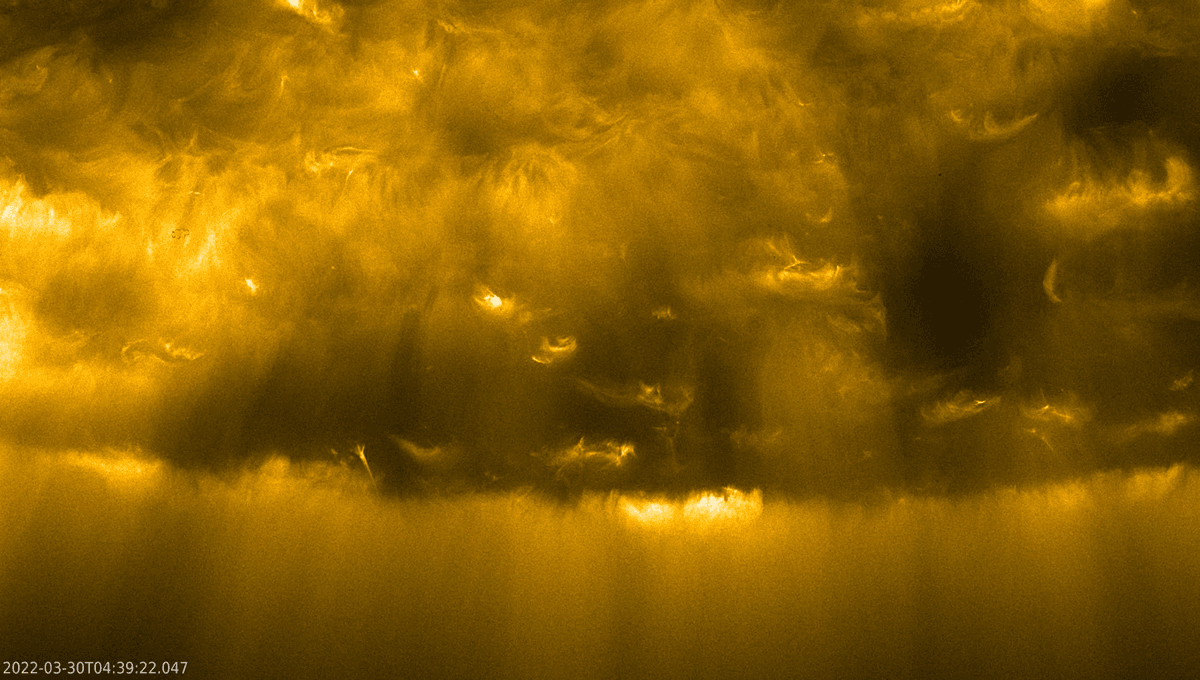
The Sun is constantly releasing a stream of particles: the solar wind. While this can sometimes be increased by explosions and coronal mass ejections, the origin of the wind is not understood. Now, the European Space Agency’s Solar Orbiter has provided a new insight into this mystery. Observations from the spacecraft reveal the presence of tiny jets of plasma that are believed to be a likely candidate for the source of the solar wind.
The most powerful class of solar flares is the X-class. The smallest are a billion times weaker and are known as nanoflares. These tiny jets are 1,000 times less powerful. They also last for 20 to 100 seconds. Researchers think that these are linked to the coronal holes, the places in the Sun’s atmosphere where the magnetic field stretches into the Solar System, allowing the wind to escape.
The findings challenge the idea that the solar wind is constantly being spewed, especially passively as the plasma expands outwards into the Solar System through the coronal holes.
“One of the results here is that to a large extent, this flow is not actually uniform, the ubiquity of the jets suggests that the solar wind from coronal holes might originate as a highly intermittent outflow,” Andrei Zhukov of the Royal Observatory of Belgium, a collaborator on the work who led the Solar Orbiter observing campaign, said in a statement sent to IFLScience.
Solar Orbiter is a game changer when it comes to solar observations. By using its Extreme Ultraviolet Imager (EUI), the team was able to see these small structures at the coronal hole located at the solar South pole. And while short-lived, they seem to be everywhere, releasing particles at speeds of up to 100 kilometers (61 miles) per second.
“We could only detect these tiny jets because of the unprecedented high-resolution, high-cadence images produced by EUI,” added lead author Lakshmi Pradeep Chitta, from the Max Planck Institute for Solar System Research, Germany.
“I think it’s a significant step to find something on the disc that certainly is contributing to the solar wind,” said David Berghmans, also at the Royal Observatory of Belgium, a principal investigator for the EUI instrument.
A better understanding of the effect of these jets on the solar winds will happen in a few years. Currently, Solar Orbiter goes around the Sun at the level of its equator, roughly like all the planets. But by using Venus’s gravity, it will be pushed into a more inclined orbit. Solar Orbiter will be the first spacecraft to see the poles of the Sun, and will have a new angle to study so many solar phenomena.
“It’s harder to measure some of the properties of these tiny jets when seeing them edge-on, but in a few years, we will see them from a different perspective than any other telescopes or observatories so that together should help a lot,” explained Daniel Müller, ESA Project Scientist for Solar Orbiter.
The study is published in the journal Science.
Source Link: Tiny Plasma Jets Might Be The Source Of The Mysterious Solar Wind